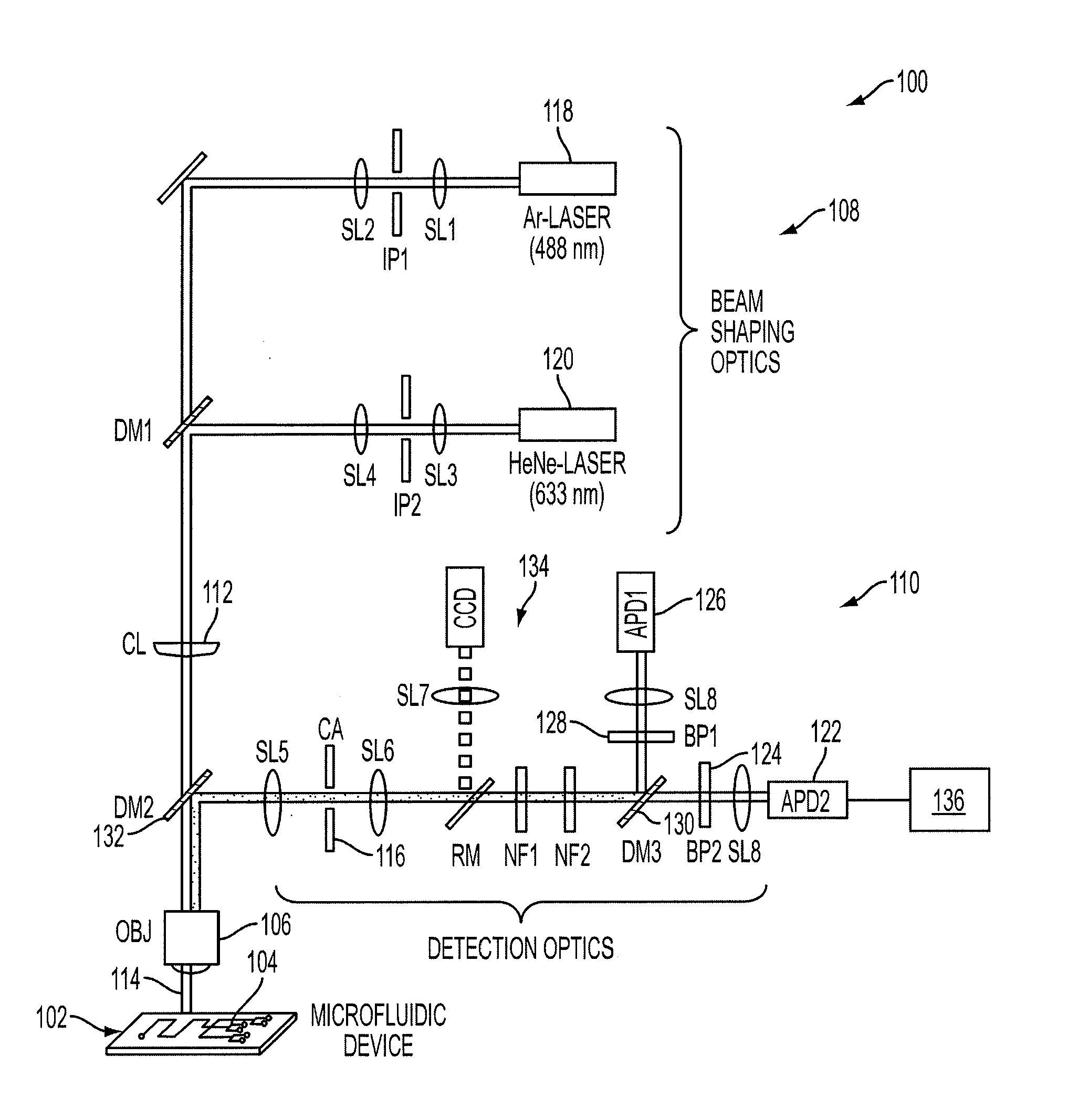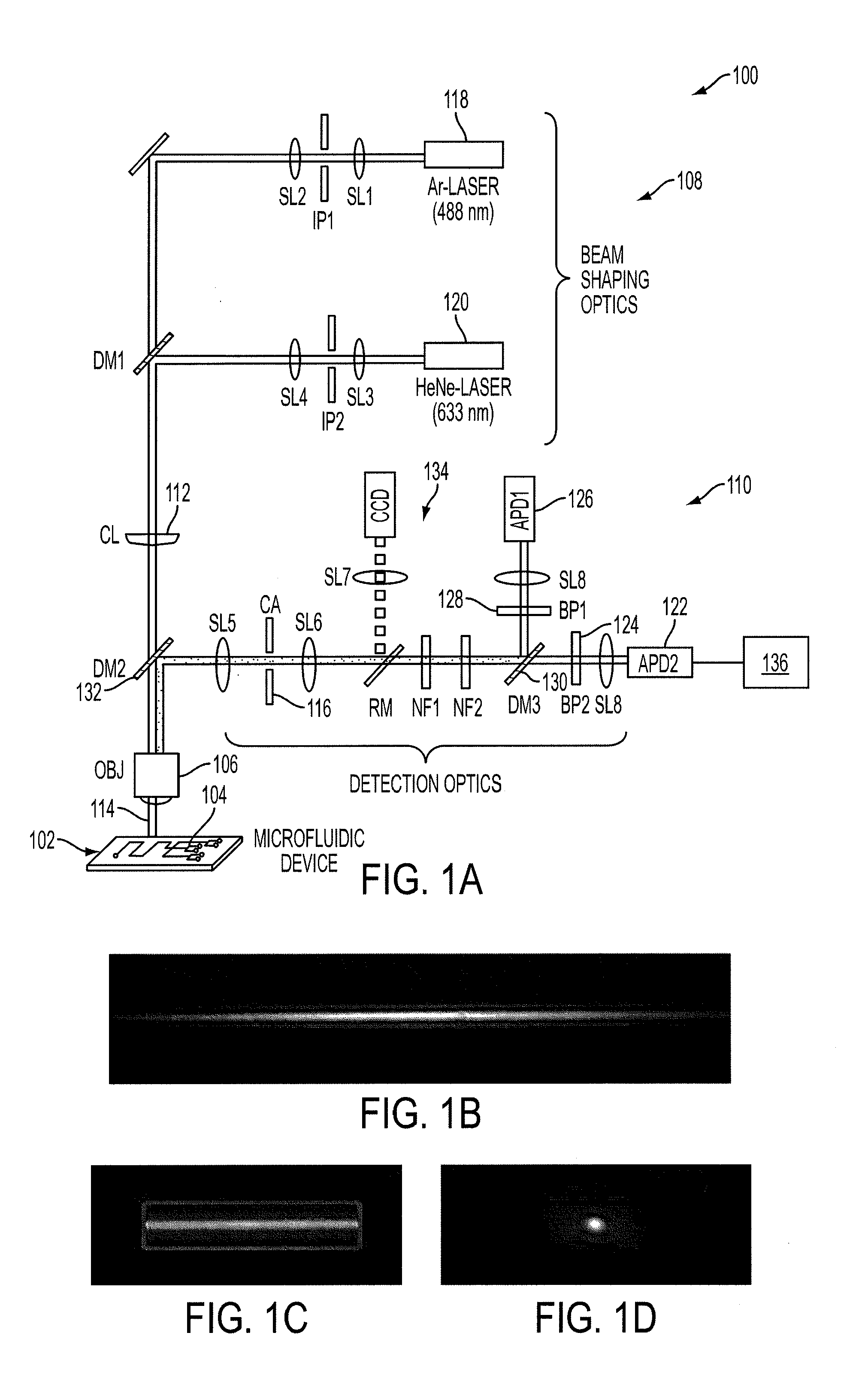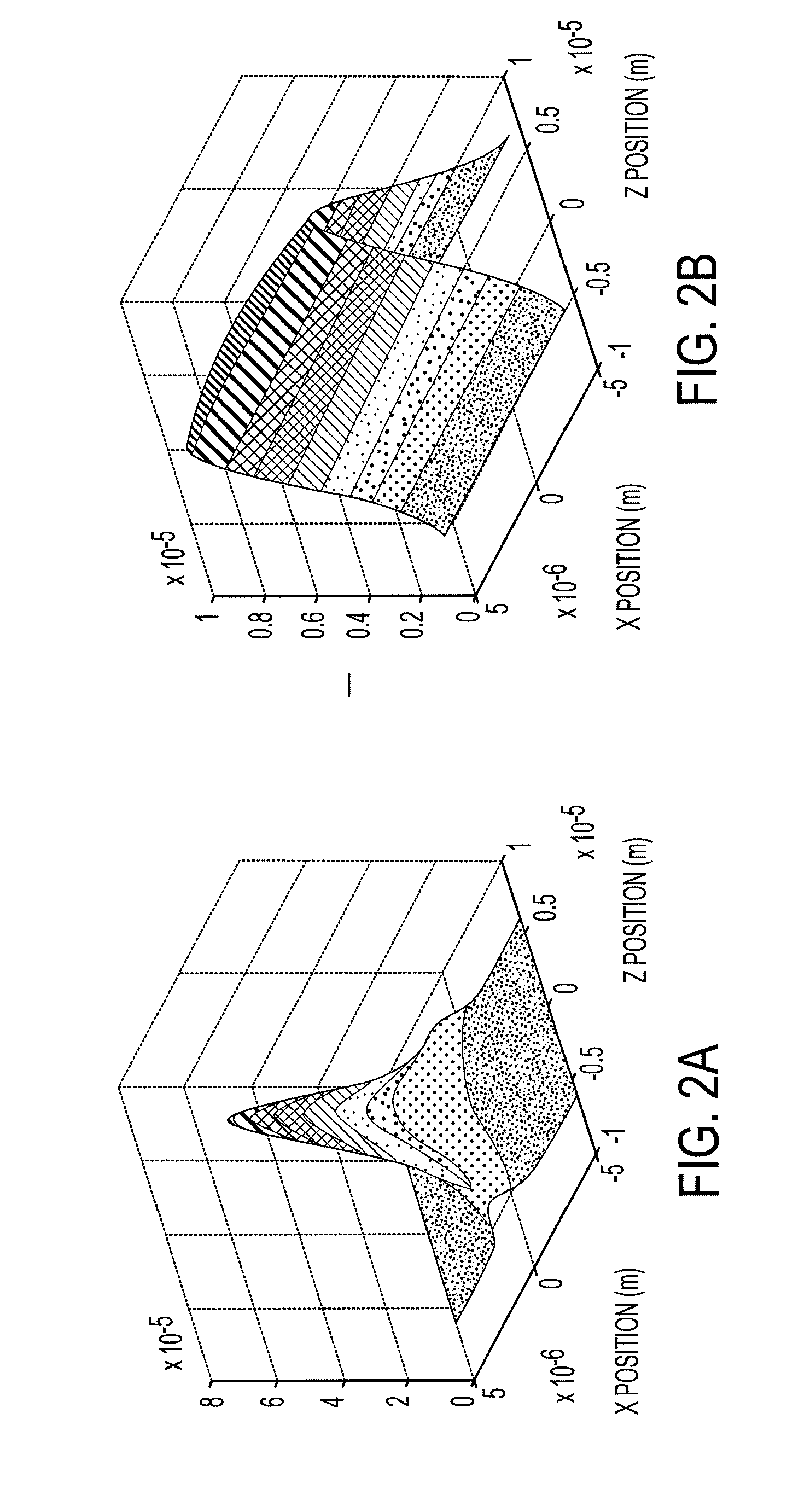Cylindrical illumination confocal spectroscopy system
a confocal spectroscopy and cylindrical illumination technology, applied in the field of cylindrical illumination confocal spectroscopy systems and methods, can solve the problems of smd significantly hampering its application in quantification and burst parameter determination, limiting its accuracy, throughput, practical applicability, etc., and adding significant variability and uncertainty to not only the burst parameter but also the rate of detection
- Summary
- Abstract
- Description
- Claims
- Application Information
AI Technical Summary
Benefits of technology
Problems solved by technology
Method used
Image
Examples
examples
[0044]As depicted in FIG. 1A, high signal-to-noise detection can be enabled by the combination of a cylindrical lens (CL) 112 with a novel, microfabricated confocal aperture (CA) 116 according to an embodiment of the current invention. The cylindrical lens 112 is used to expand the illumination volume laterally in 1-D (along the x-direction or width) while remaining diffraction limited in the y-direction to maximize signal-to-noise ratio (FIG. 1B). Then, a confocal aperture is used to limit light collection to only the center section of the illumination volume (FIG. 1C). The microfabricated confocal aperture is neither round nor slit-like as in typical SMD but is rectangular and mimics the shape of the CICS observation volume. Whereas typical pinholes are nominally sized to the 1 / e2 radius of the diffraction limited illumination volume (Centonze, V., and J. B. Pawley. 2006. Tutorial on Practical Confocal Microscopy and Use of the Confocal Test Specimen. In Handbook of Biological Con...
PUM
 Login to View More
Login to View More Abstract
Description
Claims
Application Information
 Login to View More
Login to View More - R&D
- Intellectual Property
- Life Sciences
- Materials
- Tech Scout
- Unparalleled Data Quality
- Higher Quality Content
- 60% Fewer Hallucinations
Browse by: Latest US Patents, China's latest patents, Technical Efficacy Thesaurus, Application Domain, Technology Topic, Popular Technical Reports.
© 2025 PatSnap. All rights reserved.Legal|Privacy policy|Modern Slavery Act Transparency Statement|Sitemap|About US| Contact US: help@patsnap.com



